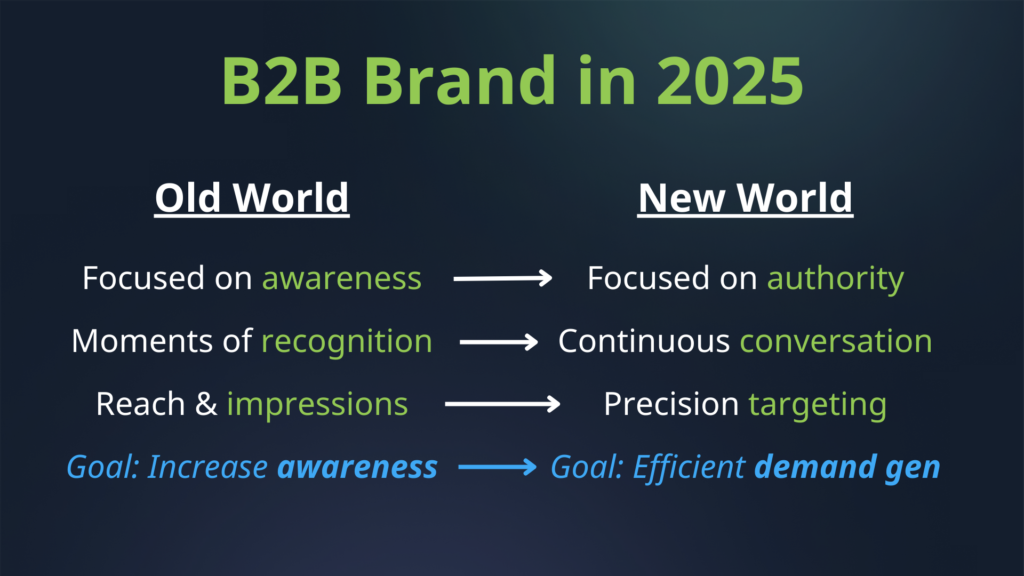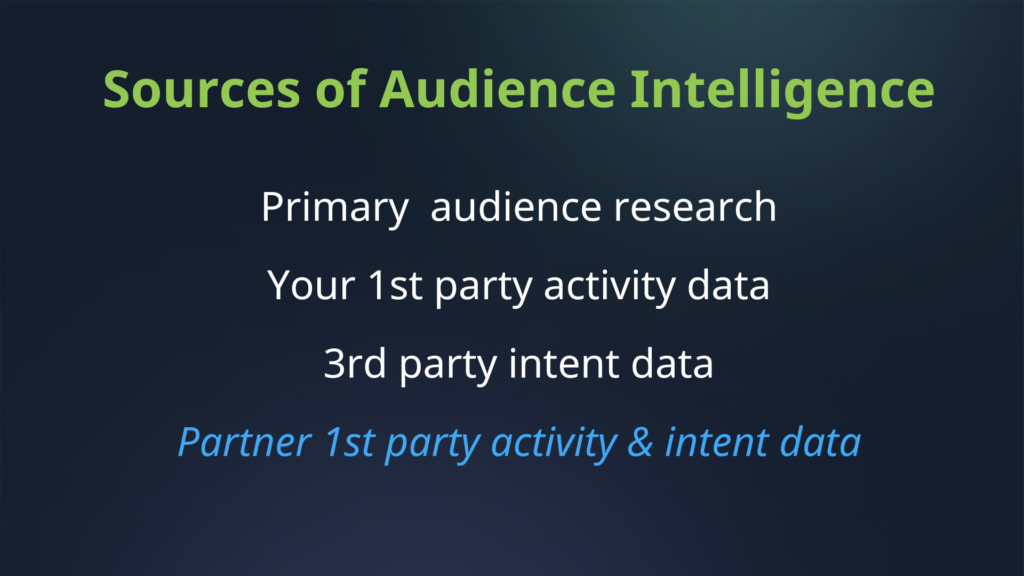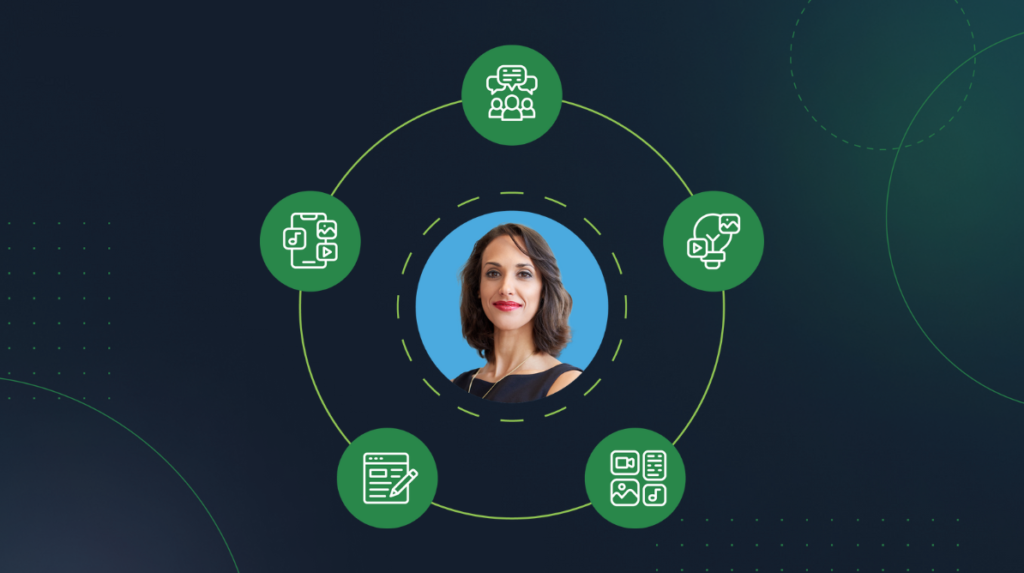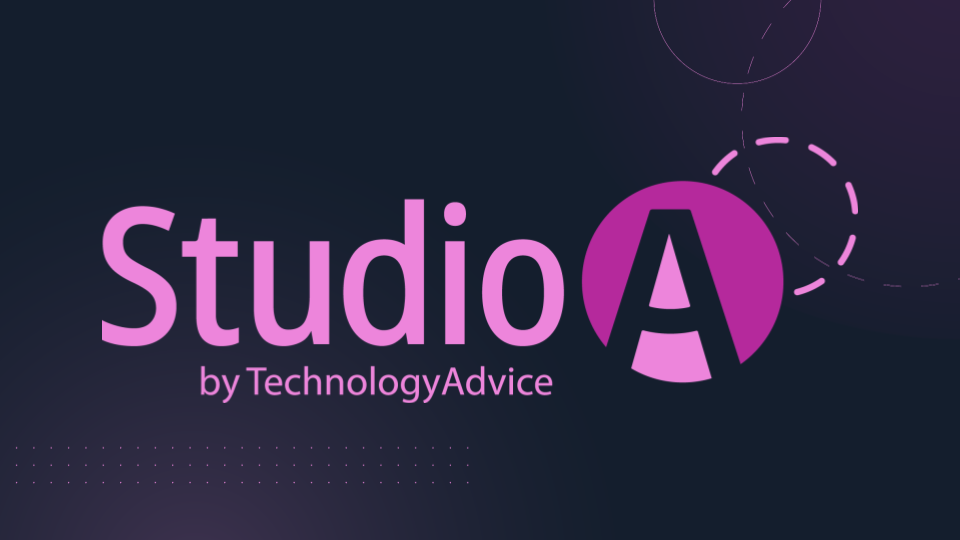Remember that article you read last year about B2B marketing trends in 2024 and saved?

Neither do we.
What we do remember is that even though it was insightful, it didn’t include practical steps for acting on the trends shared. No wonder we forgot about it! This article is… different. Just like what we, as B2B marketers, should aim for in 2025 (more on that later).
Here are five B2B marketing trends that our experts, CRO Zach Jones and CMO Tyler Lessard, shared at TechnologyAdvice’s recent Music City Demand Gen & Digital Marketing Summit in Nashville, along with practical tips and insights.
You’ll want to not just save this post but reference it throughout 2025.
1. Brand is back, and it’s bolder than ever!
While it never went entirely away (at least for some companies), the investment focus for many B2B marketing teams over the last decade has been heavily skewed towards lead generation and demand generation and less on brand. But the pendulum is swinging and brand is back, thanks to accelerated competitive landscapes and the need for companies to earn greater trust and mindshare with potential buyers in an increasingly AI-driven world.
But brand has changed a lot in recent years, and in 2025 the priority is shifting from increasing brand awareness to building brand authority with greater emphasis on targeted brand engagements that drive more efficient demand generation with the right leads and accounts.

Why it matters: AI is making it easier than ever to create content and build awareness. The challenge now is to also build trust and leadership and, ultimately, the right brand authority.
As Tyler noted during the talk, a big part of achieving that is through “creating a continuous conversation with audiences so that you stay top of mind, and remain relevant at the time they’re ready to make a buying decision.”
That’s happening through brand and demand coming together. In addition to the right content, having the right conversation requires precision targeting. We now have the tools and capabilities to engage effectively across different media and social platforms. Our focus in 2025 needs to be on driving demand downstream in a measurable way and tracking the impact.
Practical Tip: Be intentional about creating a brand and thought leadership strategy that is not only about creating awareness, but focuses on establishing your authority in areas that your customers truly care about. Partner with brands, thought leaders, and experts that your audience already trusts, and use a mix of 3rd party channels to keep your primary message and point-of-view top of mind with your ICP well before they’re ready to start evaluating solutions.
Practical Tip: Measure brand impact on demand by connecting it to downstream metrics like engagement and conversion rates. While this may be easier said than done, be intentional about establishing ways to measure how brand building activities are impacting pipeline development and/or funnel progression for your targeted accounts.
2. Omnichannel marketing takes center stage: Meet your buyers where they are
Your audience, which includes an increasingly broad buying committee, is everywhere from search to social to review sites to niche communities and more. And those possible channels continue to grow in number (Hello, Bluesky!).
While omnichannel engagement is more important than ever, we also have to sharpen our strategy to not just meet them where they are, but to do so in a way that’s relevant and meets them where they are in their buying journey. As Zach noted:
Why it matters: Did you catch that?
Up to 80% of the journey is happening pre-sales.
And the majority of buyers are consuming up to seven pieces of content before engaging with a vendor.
On other panel discussions during the same event it was mentioned that most sales opps require dozens of touches across multiple channels.

As marketers, we have to ensure that we’re putting the next most relevant content in front of them each and every time they’re engaging with our brand.
Beyond that, and most significantly, say goodbye to the traditional funnel. It’s time to start thinking about it as two boxes instead: “I’m not Ready” and “I am Ready.” Our job in 2025 will increasingly be to help buyers move seamlessly from “I’m not ready” to “I am ready.”

Practical Tip: It’s not about being on as many channels as you can, but about being on the RIGHT ones and creating consistent experiences that position your brand as a trusted authority. Evaluate your current channels, test a few new ones, and find ways to deliver ‘full-funnel brand experiences’ on the channels that are working to meet buyers where they are.
Practical Tip: Continue to pay attention to your target audience and any changes or trends in their activity on your current channels and if there are new channels to be added to the mix. Consider testing new 3rd party publishers, communities, influencers, or social media channels that are well respected by your target audience.
3. Content reinvented: The key to standing out in 2025
More formats. More publishing frequency. More channels.
Who’s excited?!
These changes don’t just require a shift in how marketers approach their content strategy and scale their teams. They also create an opportunity to engage and influence buyers in new and exciting ways.
As Zach put it, “it’s an opportunity to connect with them, not only through educational content, but through content that builds a deeper, more emotional connection with your brand.”
Marketing is all about relationships after all, and this is a significant opportunity to change the way that we’re building them and stand out. It’s no longer a world of just white papers, eBooks, and blogs. Additional opportunities to engage and influence now include:
- Short form social video to support discovery
- Custom research reports and timely market insights
- Interactive landing pages and infographics
- Personality-led podcasts and video series
However, as Zach mentions, we have to remember that it’s not about having the most content in the most places. It’s about having really great content that resonates deeply with our audience. Content that stands out and captures attention effectively. Content that, most crucially, builds trust.
Why it matters: People trust others, not necessarily the brand they’re speaking with. In TechnologyAdvice’s 2024 IT & Cybersecurity Buyer Insights Report, >60% of B2B buyers reported that product reviews, articles, expert reports, and case studies were all highly or very important for their most recent purchase.
As Tyler put it, content supported by a third party voice such as customers, experts, analysts, and reviewers is what your audience prefers. So we as marketers need to get better at producing content that brings these voices to life in a credible way.
Practical Tip: The top 3 most important sources of information for today’s tech buyers are all driven by 3rd party voices. Case studies, expert articles/reports, and product reviews all represent 3rd party voices that are validating your solution and brand. Lean into this in 2025 and look for new ways to activate customers, experts, and influential brands to help tell your story in a more credible and trustworthy way.
Practical Tip: Identify 2-3 raving fan customers who can help tell your story in case studies and other formats to help build trust. Leveraging that content at each stage of the buying journey, not just as a bottom-of-funnel case study.
Practical Tip: Diversify your content portfolio. Today’s buyers learn in many different ways, requiring you to embrace new content formats like video, podcasts, research reports, interactive content, and social-first content. You don’t have to do it alone, partners like StudioA can help!
4. ABM continues to shine while buying groups expand
We are moving from the MQL world to marketing qualified accounts – and from passing leads to our sales team to passing accounts to our sales team. At the same time, buying groups are larger than ever and include increasingly diverse stakeholders, especially for tech buyers where line-of-business leaders are now driving decision-making with support from IT and other parts of the organization.
Our 2024 IT & Cybersecurity Buyer Insights Report found that 61% of large enterprises had 6+ stakeholders for their most recent IT product purchase, with nearly 30% reporting 10+ stakeholders.
It also found that 20%+ of SMBs report that both the CEO and CFO were heavily involved in their most recent IT product purchase.
Why it matters: The buying group you are targeting likely includes non-IT decision-makers and may even include the CFO and CEO. In addition to the challenges of standing out and providing value on the right channels, we need to make sure we are building influence with multiple stakeholders across buying teams, including these non-traditional players.
Afterall, we all know that the CFO, CEO, and the line of business folks who aren’t the primary champion, aren’t likely going to be coming to our website and signing up for the demo. They’re going to be more influenced by information they’re finding in their ecosystems. Understanding how you can be present across all relevant channels is essential.
Practical Tip: Personalize messaging for multiple stakeholders within target accounts, including non-IT decision-makers like CEOs and CFOs. Think about creating content that speaks to each stakeholder and the unique questions/concerns/needs they might have while finding the right channels to reach these different stakeholders with those messages.
Practical Tip: Evaluate your current target audience and content strategy to make sure it includes the entire buying committee. Review your current channels to make sure they reach different stakeholders, and be intentional in creating different strategies for influencing both primary and secondary influencers in your target buying teams.
5. Audience Intelligence: The new demand generation currency
The data that you have on your audience supports almost all aspects of your marketing, including your messaging and content strategy, how you prioritize your lead generation and ABM efforts, and how you personalize your marketing and sales messages.
Just like with content, it’s not about having the most data. It’s about having the best and most timely data – and the insights that give you the best opportunity to have your message resonate with a buyer and elicit a response.
We call these insights audience intelligence, and it typically includes a wide range of insights on different leads and accounts that help you understand their current interests, problems they are looking to solve, and their near-term purchase intent. And this audience intelligence has become much more valuable than basic contact data or lead lists.
So where do you get these insights from? And how do you know which is valuable and which is not?

One of the best sources of this data, of course, is your own insights and activity from your first party digital properties, your social media channels, and your own direct engagements with prospects. Third party intent data providers like Bombora and 6Sense also play an important role.
As does first party data from publishing partners like TechnologyAdvice, who have direct relationships with audiences who are actively engaging with content to learn about new areas of technology and potential vendors.
Why it matters: Not only do these partners have an abundance of intelligence about these audiences that is both reliable and timely (since it is real-time first party data), they are often walled off and not available through your other intent sources. And so this is a unique audience that you can reach in 2025 that is not available anywhere else. And maybe an audience that your competitors are not using.
It’s also an opportunity to use that publisher’s data and that audience intelligence to further enhance any of the other tactics that you have running with them, from better content for newsletters to retargeting techniques for content syndication.
Practical Tip: The biggest challenge lies in establishing the processes and systems needed to utilize the data effectively. Make a plan for regularly reviewing your first party and partner data to identify audience behaviors and preferences throughout 2025 and develop a system for acting on the insights.
Practical Tip: Use your partner data to improve other tactics that you have running with them. Example questions to think about and ask yourself include:
- How can you write better content to go into the newsletter that you know readers will be interested in?
- How can you make sure that your banner ad says the right things that the audience is actually researching and cares about?
- How can you make sure that you’re using retargeting techniques for content syndication to help move someone down the buyer journey?
Finally, we’d be remiss if we didn’t share this video of Zach sharing a critical piece of advice with marketers who were traveling to Nashville for the first time (you know, just in case you’re planning a trip any time soon):
Will your brand story be compelling enough in 2025 to end up in a country song? We sure hope so.





